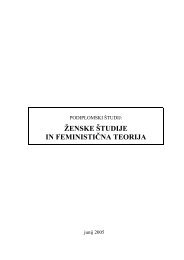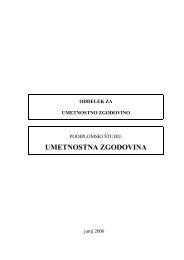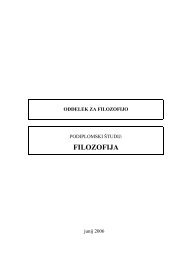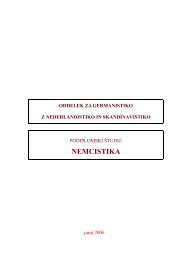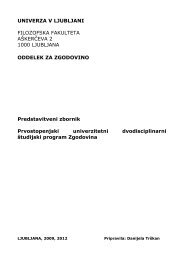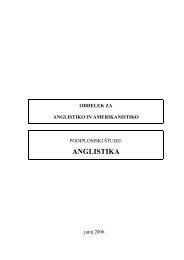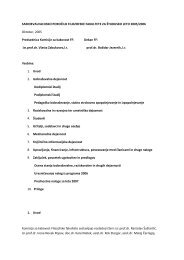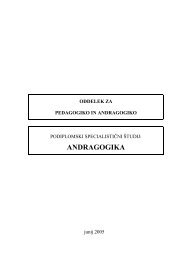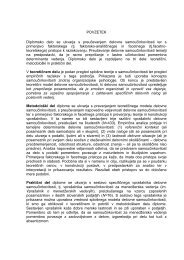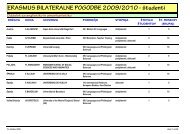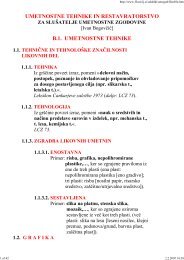LINGUISTICA XLIX - Filozofska fakulteta - Univerza v Ljubljani
LINGUISTICA XLIX - Filozofska fakulteta - Univerza v Ljubljani
LINGUISTICA XLIX - Filozofska fakulteta - Univerza v Ljubljani
You also want an ePaper? Increase the reach of your titles
YUMPU automatically turns print PDFs into web optimized ePapers that Google loves.
(h) What is more widespread in the languages of the world is more natural for the<br />
speaker (the typological criterion). What is cognitively simpler (for the speaker)<br />
is realized in more languages.<br />
The basic format of our naturalness scales is >nat (A, B), in which A is favourable for<br />
the speaker and B is favourable for the hearer. A and B are the “values” of the scale. Two<br />
expanded scales are allowed, viz. >nat (A + B, B) and >nat (A, A + B); they are valid if<br />
the corresponding scale of the format >nat (A, B) is valid. Exemplification below.<br />
The above criteria of naturalness (henceforth, axioms) are utilized to support our<br />
naturalness scales. Normally it suffices to substantiate any scale with one criterion,<br />
which backs up either value A or value B of the scale; the non-supported value is allotted<br />
the only remaining position in the scale. Of course, a scale may be supported with more<br />
than one criterion. Any clash among the criteria applied to a scale is to be handled with<br />
constraints on the combinations of criteria. So far only a few constraints have been formulated;<br />
I have not yet encountered much useable crucial language data.<br />
The naturalness scales are an essential part of what are known as deductions, in<br />
which Natural Syntax expresses its predictions about the state of affairs in language<br />
data. An example of a deduction:<br />
English. The numerical indication of frequency normally consists of a cardinal<br />
number followed by the word times (e.g., four times) except that there are one-word<br />
expressions available for the lowest numbers: once, twice and archaic thrice (collins<br />
cobuild 1990: 270–271).<br />
The two variants: the type once and the type four times.<br />
1. The assumptions of Natural Syntax:<br />
1.1. >nat (type once, type four times)<br />
I.e., the type once is more natural than the type four times. – According to the criterion<br />
of least effort, item (b) in the list of axioms.<br />
1.2. >nat (low, non-low) / number<br />
I.e., any low number is more natural than any non-low number (Mayerthaler 1981:<br />
15). – Low numbers are more easily accessible to the speaker. According to the criterion<br />
of favourable for the speaker, item (a) in the list of axioms.<br />
2. The rules of parallel alignment of corresponding values:<br />
2.1. value A tends to associate with value C,<br />
2.2. value B tends to associate with value D. See Note 4.1 below.<br />
3. The consequences:<br />
If a language distinguishes between low and non-low numbers in numerical indications<br />
of frequency such that one kind of number uses the pattern four times and the<br />
other kind of number uses the pattern once, it is the low numbers that tend to use the<br />
pattern once and it is the non-low numbers that tend to use the pattern four times.<br />
Q.E.D. (The reverse situation is not expected.)<br />
4. Notes<br />
66



